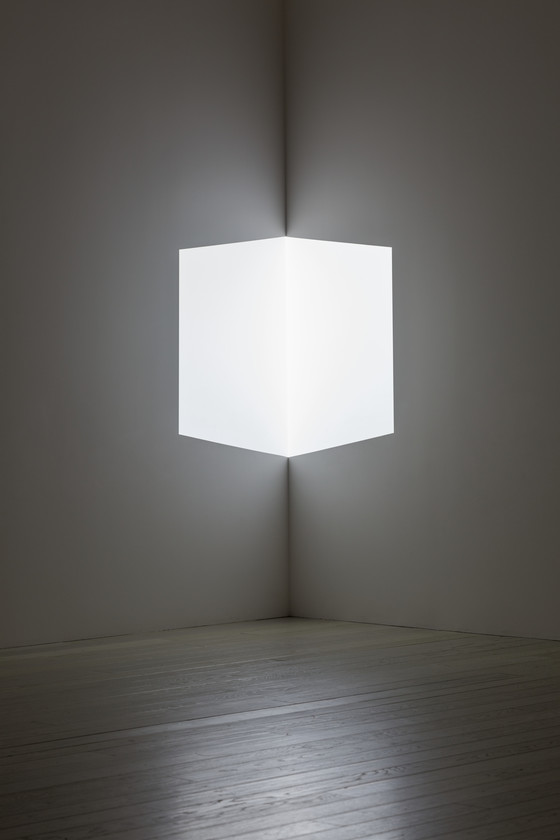James Turrell's use of light and space as mediums grew out of his interest in perception, a mainstay of experimental psychology, his major at Pomona College, and reflects the strong influence of what ...
James Turrell's use of light and space as mediums grew out of his interest in perception, a mainstay of experimental psychology, his major at Pomona College, and reflects the strong influence of what has been called "the visual texture" of his native Southern California - particularly the bright and crisp sunlight, the open landscape, and the seascape to the west with its low horizon line. Turrell has explained that, "in working with light, what is really important to me is to create an experience of wordless thought, to make the quality and sensation of light itself something really quite tactile. [My works seem] intangible, yet [they are] physically felt. Often people reach out and try to touch [them]." This in a nutshell describes Afrum (White), one of Turrell's first light sculptures.
In the fall of 1966, just out of graduate school, Turrell developed a series of so-called cross-corner projections, consisting of a rectangle projected into a corner that from a distance appears to be a floating cube. When the viewer moves from side to side, the cube seems to reveal itself in perspective; it is only as the viewer advances toward the corner that the image dissolves to the point of being understood literally as light on the wall. Afrum (White) is the second of Turrell's cross-corner pieces and the first for which he drew on technological advances in light projection developed for the film industry. Afrum (White) was previously owned by Ed Wortz, a scientist at the Torrance-based aerospace company Garrett Corporation, with whom Turrell and Robert Irwin worked from 1968-71 on LACMA's pioneering Art and Technology exhibition.
Throughout his oeuvre - which includes not only light projections but also his totally immersive "ganzfeld" (or "whole field") environments, his skyspaces, and his ongoing Roden Crater project on the edge of Arizona's Painted Desert (where he is working with light and space on the grand scale of nature) - Turrell leads us to the limit of our abilities to perceive and then beyond, to a level of greater understanding.
Lynn Zevevansky, Curator, Contemporary Art, (2008)
More...
